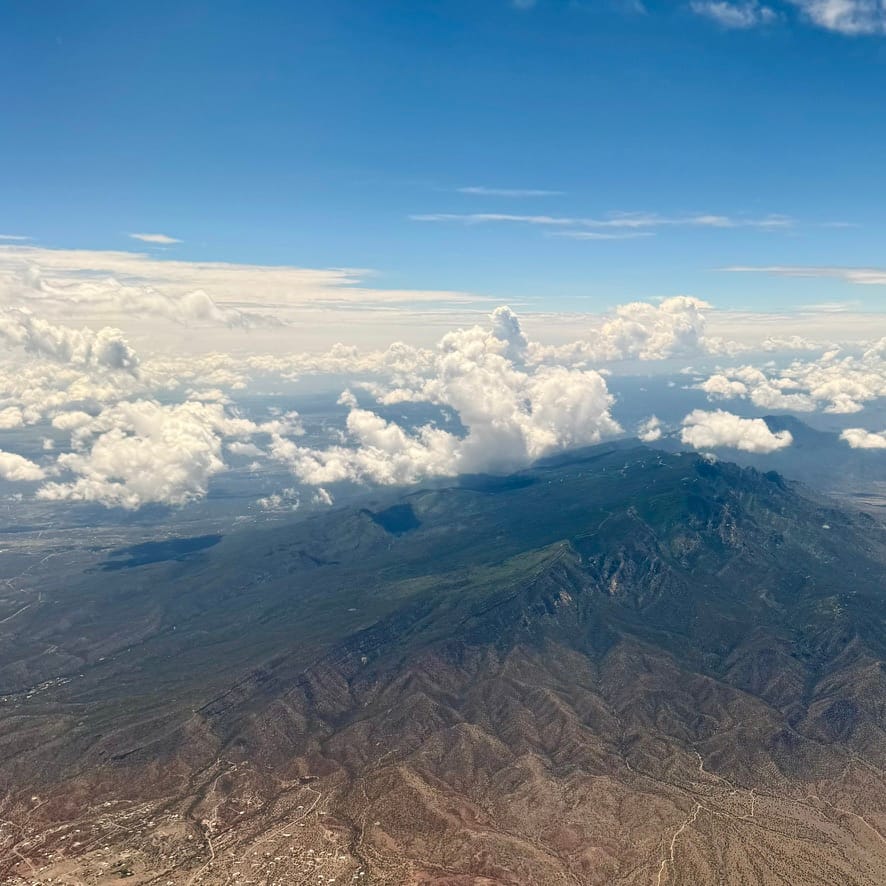WGA 2025: Some highlights and thoughts from the Western Governors' Association meeting
A lot of topics relevant to Interior, like public lands, Tribes, AI and energy, and more. Some good, some not-so-good.
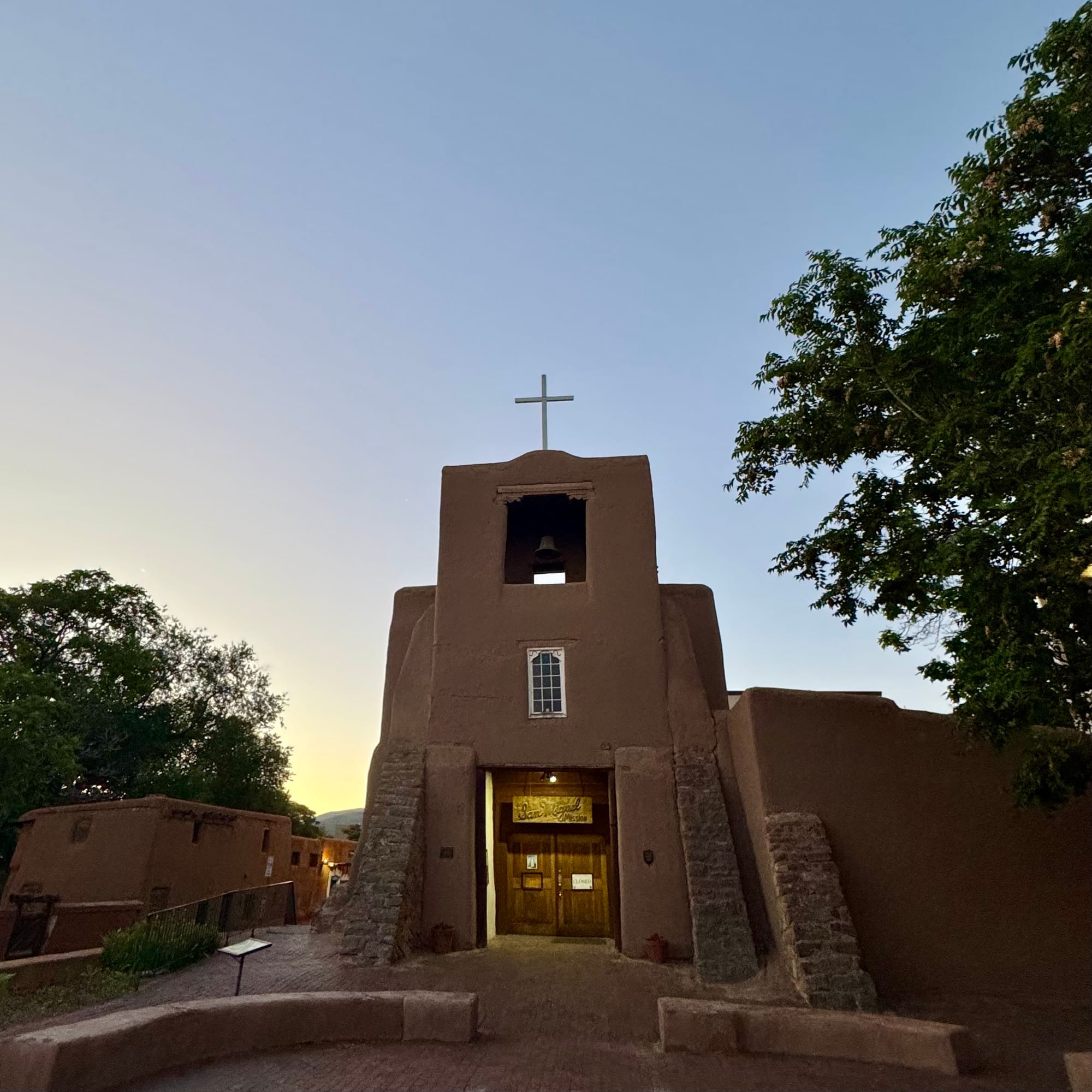
“If you care about the environment, then you should want everything made here, in the U.S., mined here…we have protections here, we have reclamation that others don’t have…”
This is pretty close to a quote, and even if not verbatim, it captures what I heard from Secretary of the Interior Doug Burgum’s message at the Western Governors’ Association annual 2025 meeting in Santa Fe, New Mexico. As a sound bite goes, who would argue with that? The U.S. does have good measures to protect nature and the environment, workers who develop resources, and so-on. We could do more in these areas, and existing measures could be made more efficient and effective, but the point is fair enough on its own.
But, and this is a BIG but: while the Secretary is making this pitch whenever he can, the administration is trying to rescind or otherwise nullify those protections he touts, at every turn!
Consider the announcement from Secretary of Agriculture Rollins just a couple hours later at the WGA meeting, in which she celebrates that they intend to rescind the Forest Service’s “Roadless Rule”, which can limit creating roads in large tracts of land that don’t have roads yet. For a quarter century, this Rule has helped maintain forest integrity and health and reduce fragmentation across about 58 million acres, or about 30%, of the Forest Service’s lands. In turn, the Rule has meant better places to recreate with unbroken nature, cleaner water, better sequestration of carbon to mitigate climate change, more resilience in the face of climate and other change, and better habitat for species that need it. And the administration wants it gone, expressly for logging and ostensibly for fire management.
This is precisely the kind of protection that Sec. Burgum invoked as his justification for why mining and energy extraction should happen in the U.S., but they’re (proudly) looking to end that protection! Yes, the Roadless Rule does not apply to Interior’s estate, but is illustrative of the administration’s direction to reduce or completely remove protections that have made the US a global model for a healthy and productive environment. Attacks on clean water. On endangered species and their habitats. National monuments. Mining the seabed. The cognitive dissonance was tough to bear, and I’m not even sure if they understand the contradictions.
Despite this incongruity—and others—it was a really good meeting. In addition to hearing from governors who are leading on all kinds of issues that related to Interior’s work, I got to meet with people from sectors I don’t know very well, like mining exploration and key players in the energy sector; some folks I know a bit, like Western landowner groups or former government leaders; and catch up with people I know but hadn’t seen in a while. So here’s a run-down of some key (and non-exhaustive) observations from WGA 2025.
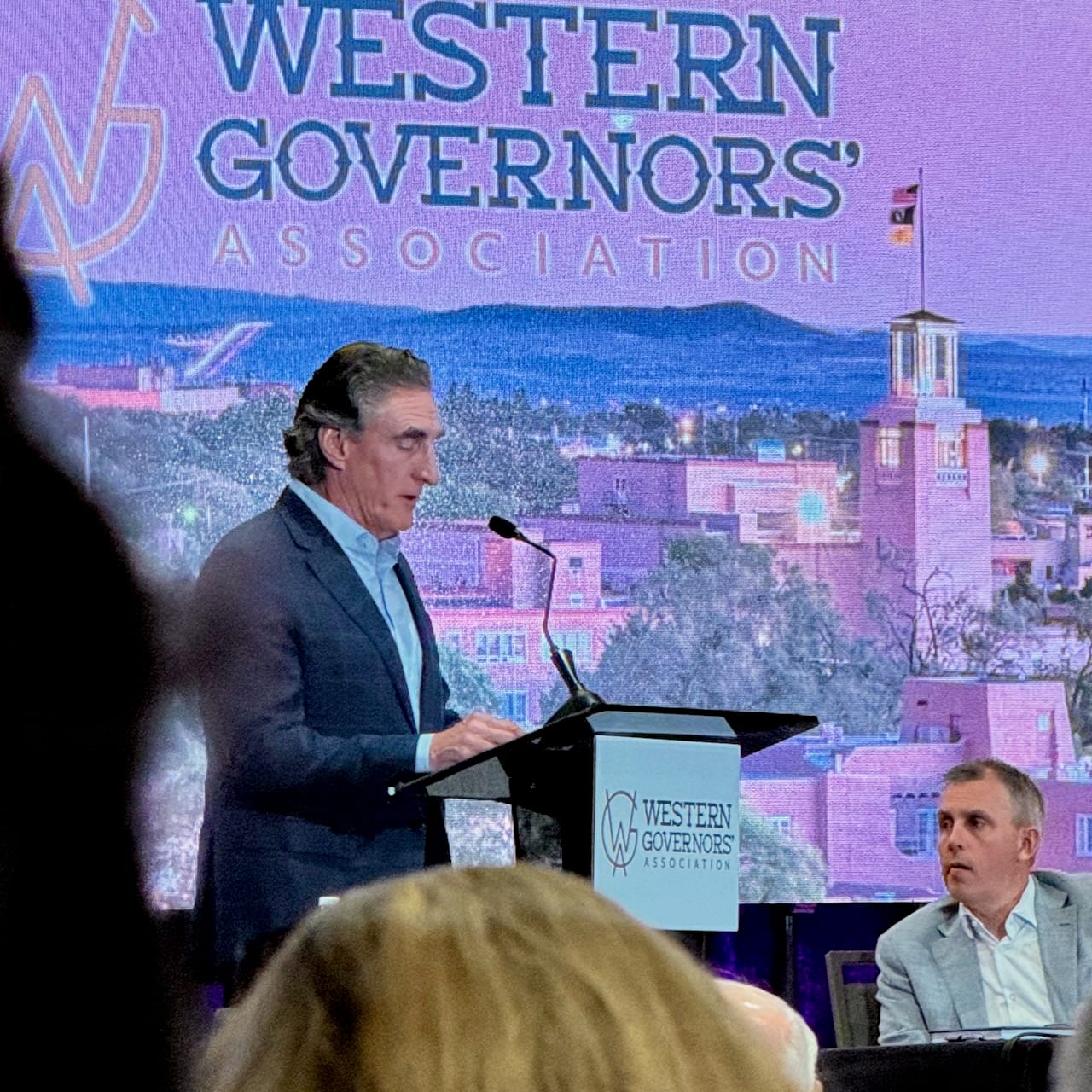
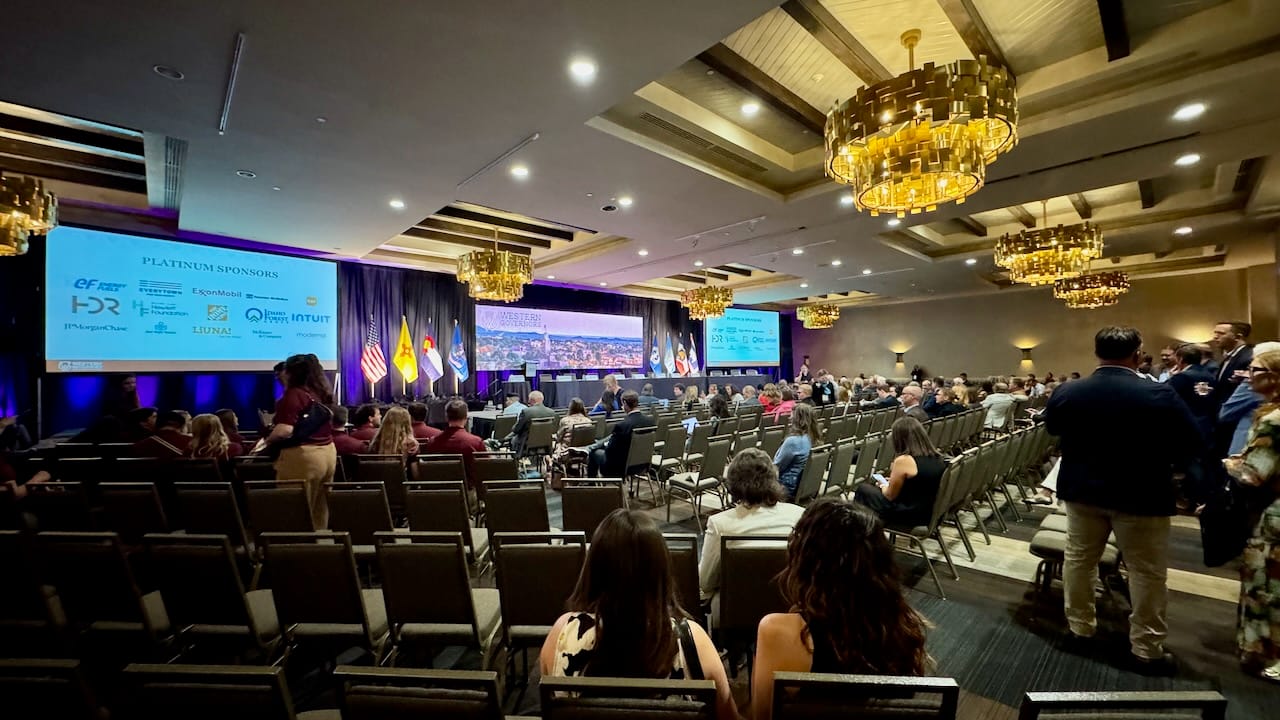

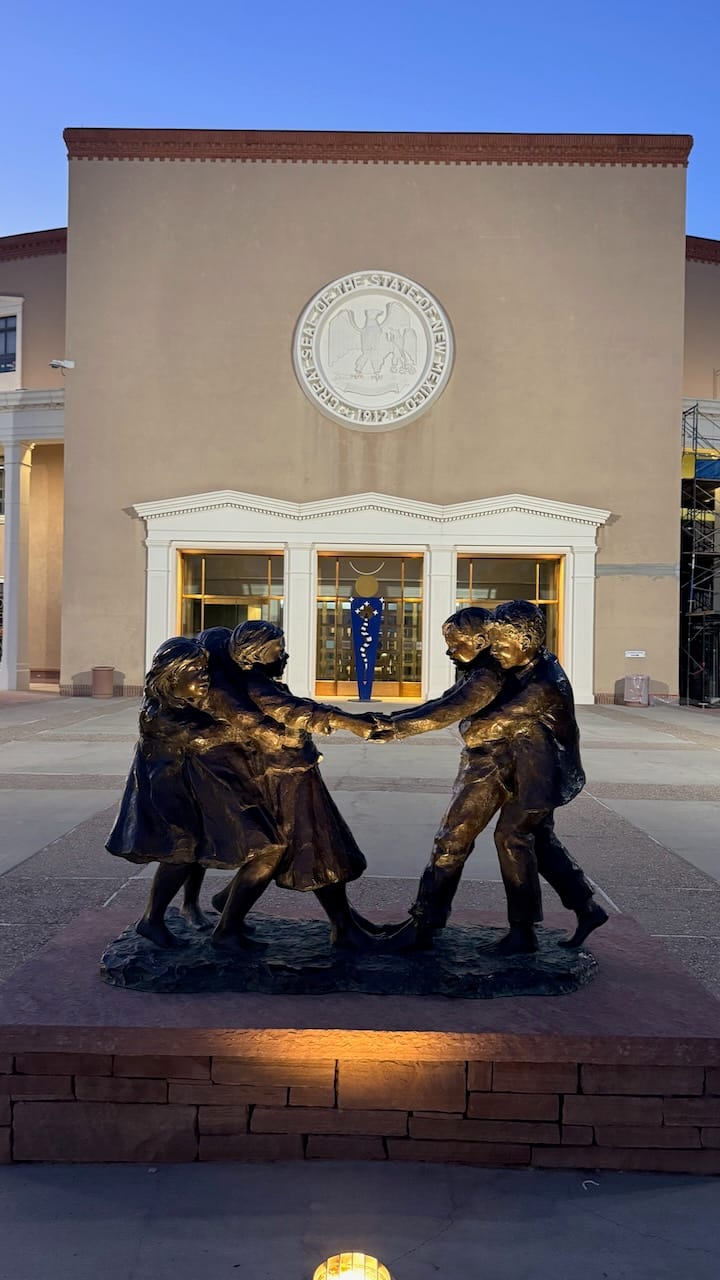
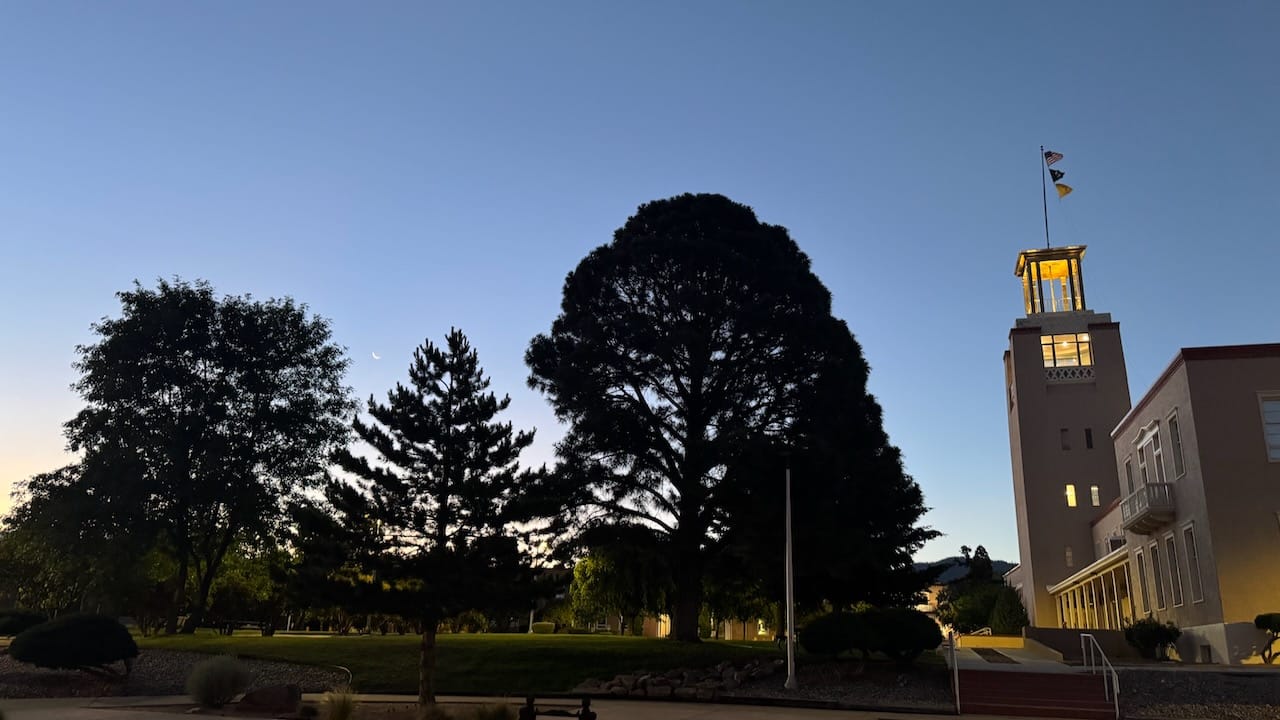
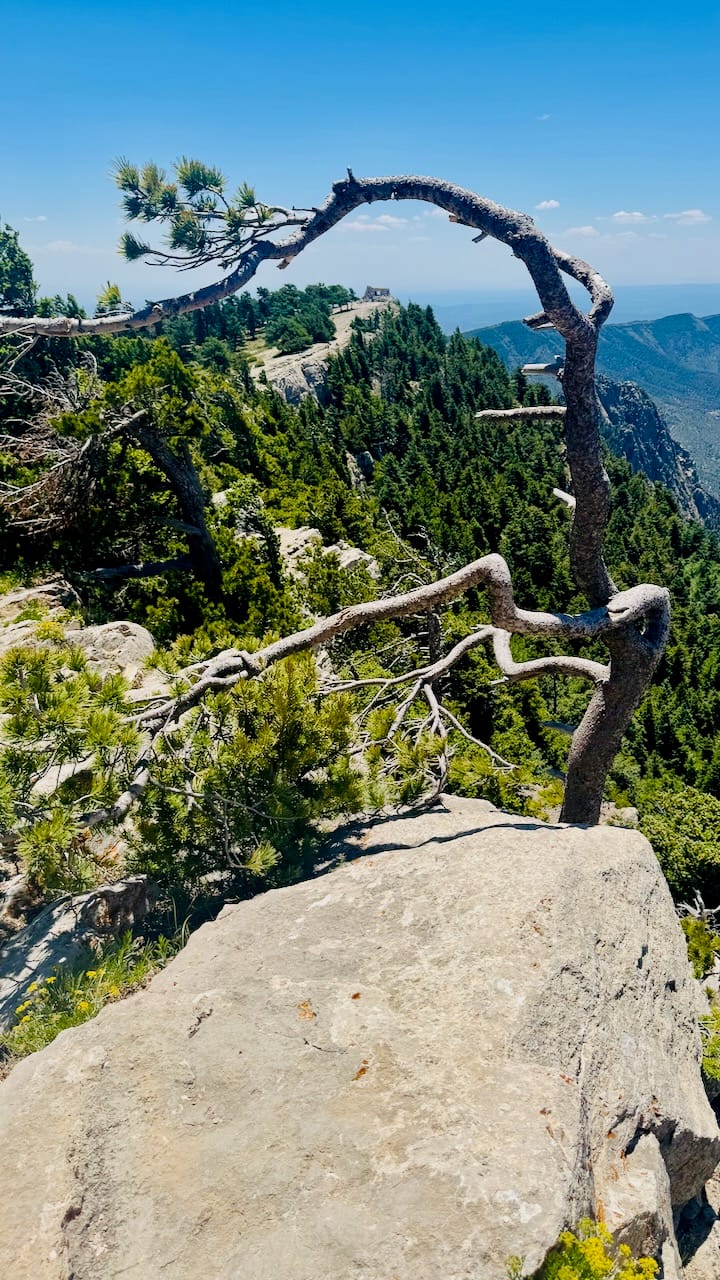

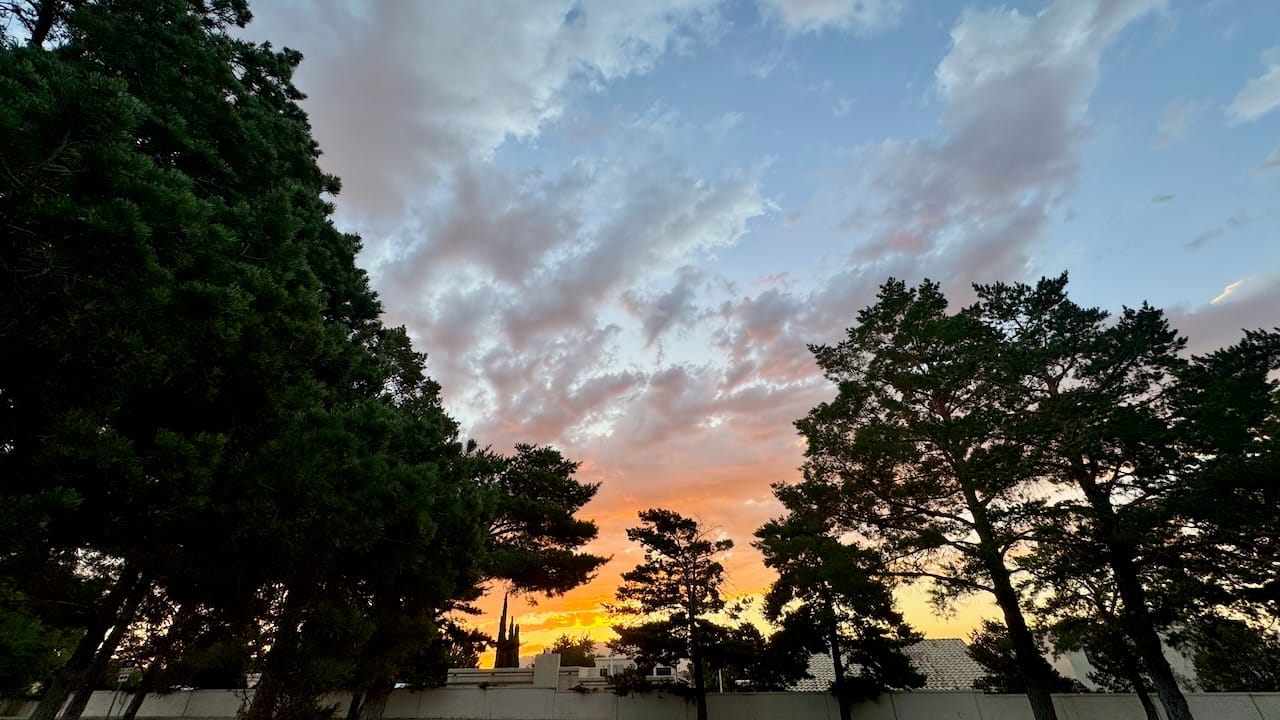
The WGA meeting and New Mexico delivered voices of leadership, history, and nature. Photos: CC-BY-SA Next Interior.
Good to hear
There were a boatload of good and interesting discussions throughout the meeting, but I thought three topics were particularly relevant to Interior’s mission and good to hear interest from governors.
Wildland fire recovery—As expected, wildland fire was a big topic for the Western governors, especially with several active fires in New Mexico during the meeting, but also elsewhere across the West. The panel discussion on post-fire recovery and restoration was particularly good because the governors clearly understood some really key issues, like invasive species and native seeds (more below). Among the messages from the panelists was the clear need for federal support for coordination before, during, and after disasters; it was great to hear the shout out for FEMA and its work despite the threats to it, for example. One panelist from a state agency summarized it as, “We work together as a system: feds to provide support, states to coordinate, and locals to execute.”
Invasive and native species—Invasive and native species and native seeds in particular came up several times during the two days, with the governors adopting a resolution on the need to address biosecurity and invasive species. Governor Polis of Colorado raised the topic on a couple occasions, highlighting the cost of invasives, such as the intersection with wildland fire. This was echoed by Gov. Cox of Utah and Gov. Gordon of Wyoming, both of whom clearly understood the connection between invasives, wildfire, and conservation issues. (Invasives are one of the five main drivers of biodiversity declines.) Gov. Gordon further highlighted the need for native seed resources to aid in restoration efforts. I talked with him briefly about the National Native Seed Center, which was funded through the Department of the Interior in the Infrastructure Investment and Jobs Act but which appears to still be stuck with the administration’s funding freezes. The West, and the country, needs that Center established and running, yesterday.
Connectivity—During the engagement with Sec. Rollins, Gov. Gordon asked her to prioritize habitat connectivity and corridors for wildlife, which matters to so many species, including big game like deer and elk plus an untold number of nongame species. This request makes sense given the Governor’s interest in the topic, and makes sense to go to the Secretary of Agriculture given the role that both federal and private lands have in connectivity across landscapes. Unfortunately, it didn’t seem like Sec. Rollins understood the ask but she also didn’t push back.
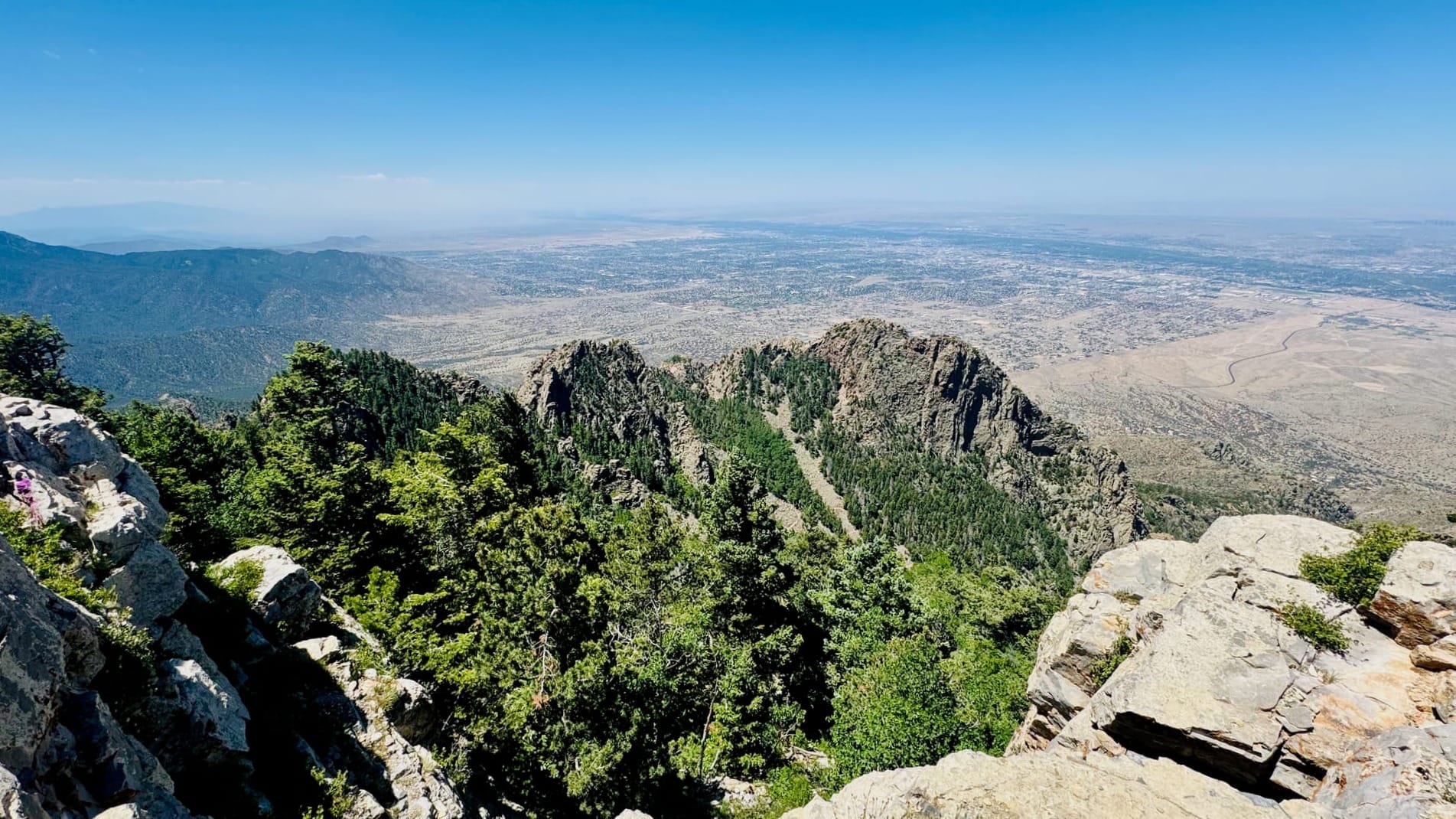
Bad news bears
There were many different pieces I might classify as “bad” but are certainly open to differences of opinion. We can agree to disagree! But I thought one was worth flagging here because it’s problematic on a couple levels: Sec. Burgum’s emphasis on AI, in both general and specific terms.
In general, there’s a significant issue that the “promise of AI” drives the justification of so many actions from the administration. To be fair, they’re not alone, but consider how declaring an “energy emergency”, which is the foundation for waiving all manner of environmental laws, regulation, or processes to support fossil fuel development, is driven by AI’s insatiable energy appetite. Same could be said for mining, impacts to water, foreign affairs, and more. Further, a pervasive belief that federal public servants can be replaced by AI has supported the massive staffing cuts at Interior and beyond, underpinned by malice.
Yet where are we with AI? Tons of hype—which has been characteristic of AI for decades—and untold billions of dollars being poured in while companies inject AI into products and services at every turn, regardless of whether people ask for them or whether benefits have been demonstrated. At the same time we’re seeing day-after-day that the outputs of these generative AI tools are very regularly wrong, bad news for basic skills like thinking, or even dangerous to people (and not in vague potential ways, but real, concrete harm).
The point of this post is not to litigate gen AI, but instead to note there’s a ton of uncertainty in this technology and its utility for society. In parallel, incredible volumes of resources and effort, some with irreparable harm to people and the planet, are being poured into AI’s advance in the face of this deep uncertainty. The amount of enterprise-level risk associated with this—so many eggs put into one basket when we don’t really know anything about the basket’s capacity—is incredible. What are Sec. Burgum and other administration leaders doing to treat that risk? To avoid or mitigate the costs and harms if the technology does not work as hyped but the environmental harms of accelerated and unchecked energy development happen anyway? I haven’t seen any discussion of such considerations, and unfortunately no one was asking about them.
That’s a snippet of a general issue. To me, the outright concerning part was a very specific example, using genAI is the answer to solve (the massive) backlog of Tribal probate cases across Indian Country. To be clear, this isn’t an issue the Secretary made up, it is a very big problem.
Quick background. These are situations when a Tribal member with trust assets (e.g., Tribal lands held in trust) passes on and those assets need to be distributed to heirs. Sometimes these situations are incredibly complex, such as when there is no will or the will is contested, and can take years to resolve. Given the decades of underfunding for the Department, and especially given the incredibly complex laws in this area, it’s not surprising that a backlog exists and Tribal members—to whom the U.S. Government has an obligation to fulfill trust responsibilities like this!—aren’t being served.
When asked by one of the governors for a specific application of AI for Interior, this is what the Secretary said (it may not be exactly verbatim, but I know it is pretty close and the gist is certainly correct): “We’re going to create bots that read every case in probate law…we’ll have the smartest Indian probate lawyer ever. And then we’ll make 1,000 of them and put them to work to resolve all these cases, clear this backlog.”
The problem is that almost every single week we get new cases reported where lawyers use generative AI tools to write briefs…that are riddled with errors. These errors include made-up legal cases and law review articles, even incorrect interpretations of real case law. These tools have been trained on huge corpuses of legal documents, so it’s not like the models are lacking data. This problem isn’t just law of course. It’s the nature of gen AI, at least for now, that it can’t separate fact from hallucination. That leads to fundamental errors that then require additional human attention to identify and correct.
This situation and proposal from the Secretary should make everyone pause and ask, What kind of disaster is this going to mean for Indian Country, for those people who deserve to have their cases resolved? How many cases are going to be wrongly decided because the bots hallucinate facts or case law? How much time and effort will be lost trying to undo those mistakes?
I’m not going to just leave after calling out a bad idea; here’s a better one: how about Congress take action and seriously invest funding and resources, both on the US Government side and for Tribes as needed, for the people and the experts needed to address the probate cases backlog. That could be done today with a supplemental spending bill, or put into the FY 2026 appropriations bill. Maybe those staff and experts will find that some use of gen AI is helpful in the process, but to make it the solution? Seems like a bad idea.
As H.L. Mencken wrote in 1920, “there is always a well-known solution to every human problem—neat, plausible, and wrong.” Here, I think we’re going to find that AI for resolving trust probate cases—and for a lot of other issues—is a “well-known solution” that is neat, plausible, and wrong.
Missing in translation
Some of the discussion didn’t strike me as necessarily good or bad, but just felt like it missed the mark in some important way.
Take Gov. Lujan Grisham’s initiative during her term as chair of WGA, “Building Resilient and Affordable New Developments in the West” (BRAND West). This initiative makes sense given the prominence of housing challenges that Americans everywhere are facing, including in the West. The initiative led to a report with numerous recommendations—I didn’t count them—which, if implemented, will probably alleviate different aspects of the affordable and resilient housing challenge. Lots of good, thoughtful work in there.
But then I noticed that, with limited exception, one of the West’s biggest concerns was absent: the consequences for resources that would be needed for or impacted by build-out. For example, under the heading, “Investing in Strategic, Innovative, and DataInformed Initiatives Across the Housing Ecosystem” the report recommends, Congress should pursue statutory changes to streamline the process of transferring appropriate federal properties to states, communities, and developers to address housing shortages while maintaining essential guardrails and protecting critical public assets.
We’ve got compounded problems here. First is the direct issue of selling off federal lands for such development. The American public, including in the West, is not in favor of this—see more on this below. Is there a way to do it in a highly “surgical” manner that benefits local communities and lessens the load of agencies like the Bureau of Land Management without compromising what Americans get from them? Maybe, but beyond the blurb above, it’s really not discussed in the report.
Second, what about all the secondary effects of growth, many lessons of which have been learned over the decades (sometimes centuries)? Some are natural resources-based, such as where will the lumber for this expansion of housing come from. Public lands or private, local or not? What will be the effect of increased road infrastructure, which is necessary for vehicle traffic that grows with development, on landscape connectivity (which is important, as Gov. Gordon noted)? These other issues could have significant impacts on the Department of the Interior and how it serves people across the West; they deserve much more attention now so we have a full picture of the options and their consequences.
A second example of disconnect was a new phrase from Sec. Burgum, We don’t need an “energy transition,” we need “energy addition.” (I was told by someone after the meeting that he has used that in his weekly video message to Interior staff, but it was new to me.) As with the cognitive dissonance of the opening vignette of this memo, I am struck by the inconsistency of the administration’s words and actions as relates to energy. While the Secretary is advocating for more energy, the administration—including Interior—is trashing renewable energy, freezing or rejecting permitting for renewable energy, freezing funding, even seeking to take back funding for contracts that have already been signed!
Some of Sec. Burgum’s go-to arguments on this front made their appearance in his remarks. Unreliable or intermittent power from renewables…yet no mention of the advances in power storage that have developed in recent years and rapidly improving? Subsidies for renewable energy through laws like the Bipartisan Infrastructure Law and the Inflation Reduction Act…yet no mention of the estimated $875 billion in U.S. subsidies to fossil fuels (no, that’s not a typo) every year (and estimated $7 trillion globally)? It feels like the Secretary might be being selective in the factors he is presenting to the public and considering in making decisions for the Department and the country.
I get that it’s not possible to cover every single corner of complex problems in a short panel discussion or report, nor is it possible to get into serious policy discussions with a short keynote from a political appointee. But we should insist that some of these misses get the attention they deserve, and soon.
First Amendment BONUS!
On the first day of the meeting, people who care deeply about our public lands came out in force—about 2,000 people by multiple estimates, which for a Monday afternoon is stellar—to voice their disapproval for the proposals to sell off federal lands, right out front of the meeting. The message was clear: don’t sell off our public lands. They were organized, loud, and enthusiastic…it was great to see:
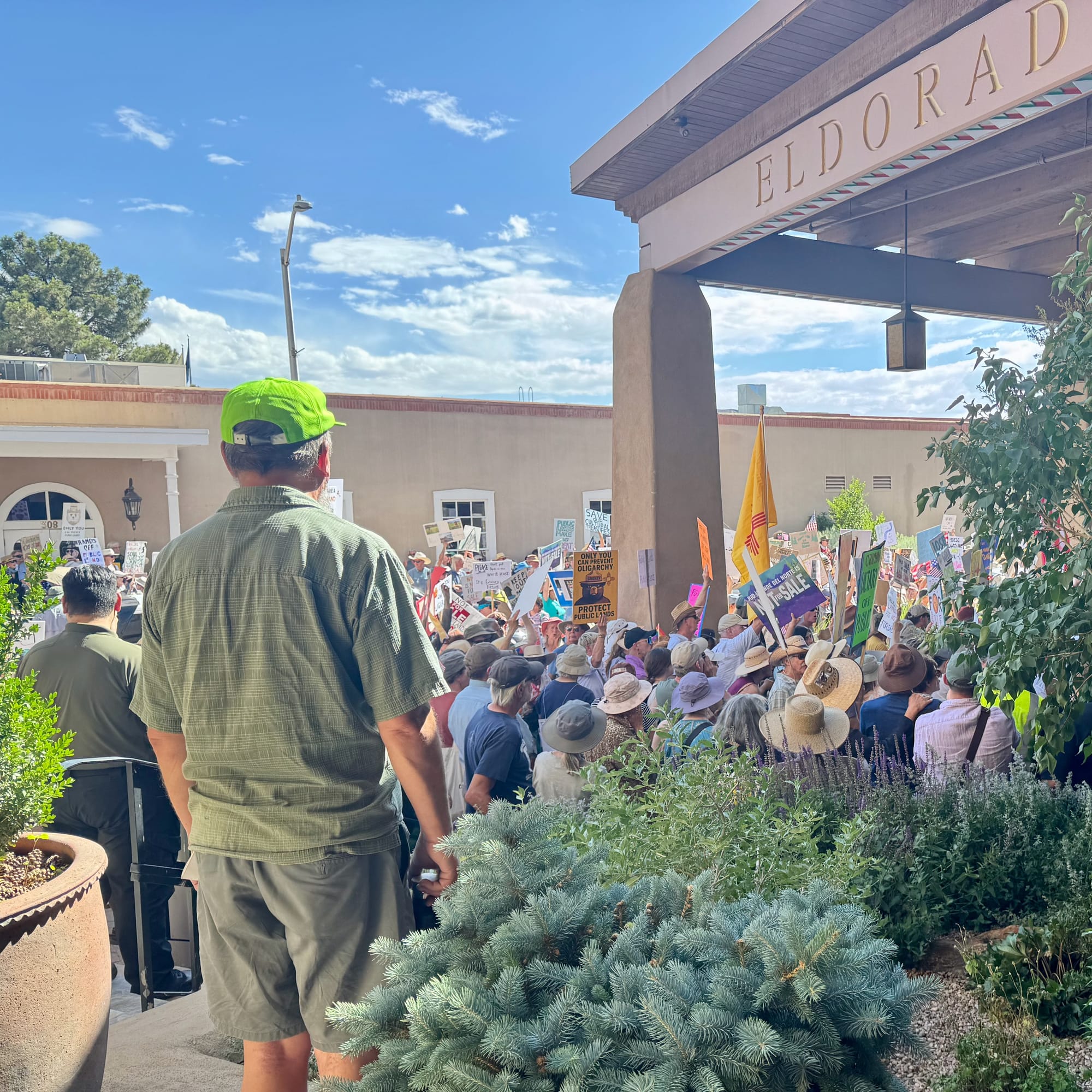
Speaking of which, that evening, Sen. Lee of Utah withdrew his (very bad) proposal to sell off millions of acres of public land from the Forest Service and the Bureau of Land Management (BLM), saying that he heard the deep, deep unpopularity of the proposal. That’s great! But he also said he would be revising the amendment to remove Forest Service lands and narrow the BLM scope, so we’ll have to see what those details are and how to engage so that Interior is able to serve people as we want to be served.
What I hope folks take from this, more than anything else, is that being engaged matters. Exercising our First Amendment rights matters, and even with the reputation of nonresponsive politics, and in these times when things seem dark to many people, peoples’ voices have broken through. We are the answer!
Take-aways
I lived and worked in New Mexico and Arizona for about a decade, and it was great to be back out there again. The West is both amazing and inspiring, and it is critical to the country as a whole; the WGA meeting brought that home.
So what to make of this, my first WGA meeting? There are many things I could highlight, but here are three that I keep coming back to:
- There’s a lot to be done to balance out some of the extreme tendencies we’re seeing from the current administration when it comes to issues core to Interior’s mission. Whether it’s protecting public lands while managing resources for use by people and contributing to the economy, or serving Indian Country more effectively, we need to stay engaged and work for a better future, especially in the West.
- Relatedly, we have a monumental task—far beyond just Next Interior or even the Department, but all of society—in measured response to and tempering the adoption and impacts of AI. Sure, there are beneficial uses, but between the costs to people (that is, actual, creative humans), the proliferation of errors about reality, and the environmental costs, there are big risks that we’re not dealing with in the midst of all the hype.
- While there were a lot of protesters outside the WGA meeting exercising their First Amendment rights, and that needs to continue, I was struck by how few people from civil society organizations were inside the meeting. I’m thinking about ways to organize folks for an upcoming WGA meeting to increase the voice. Being in the room, talking with elected leaders and people who influence elected leaders is critical if we’re to shape outcomes for people and nature across the West!
Thoughts, questions, or ideas about this post or other news from WGA? Feel free to get in touch!
